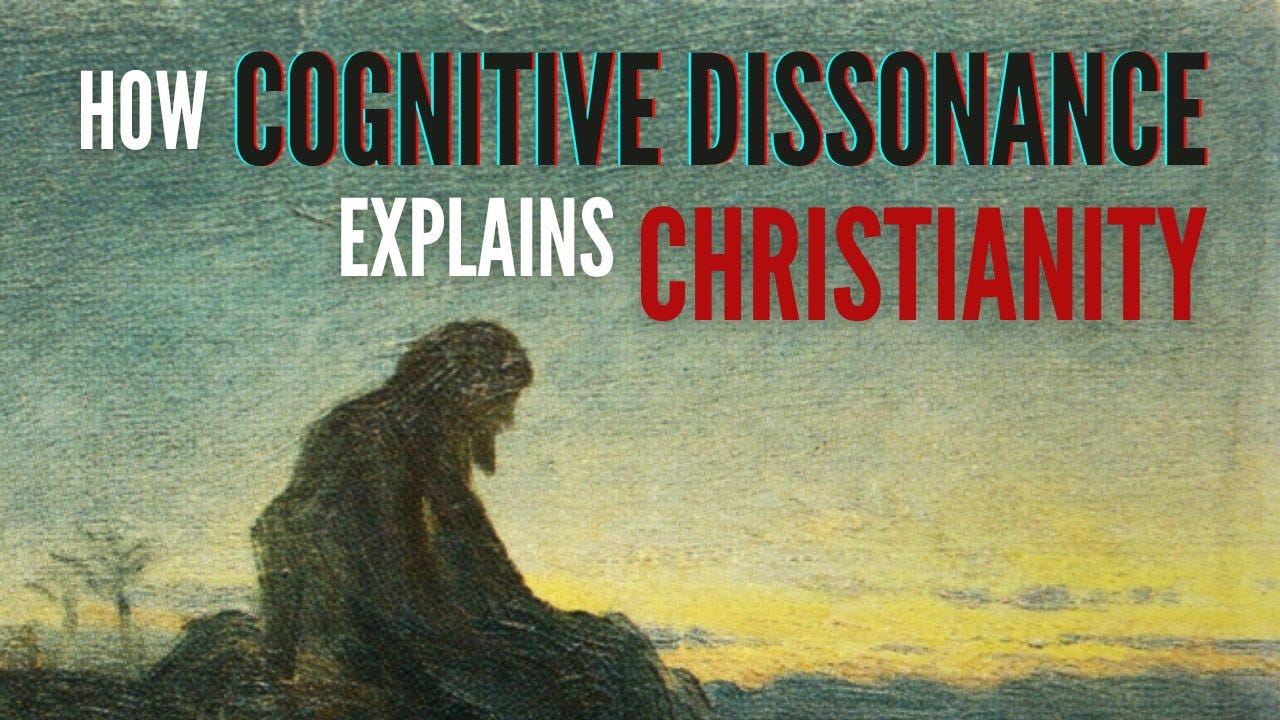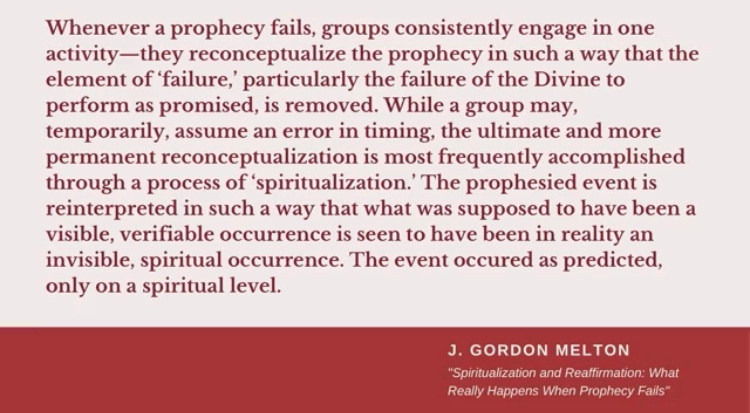From the stolen body and swoon hypothesis of the Jews and skeptics to the substitution theory of the gnostics and Muslims, the resurrection of Jesus has magnetized objections against its actuality. However, if inference and the historical-critical method has demonstrated anything, it is that these objections fall terribly short as alternative explanation of the facts.
In honest judgement, I, for one, never found the objectionability of the arguments tenable, given the forced contrivance that characterizes them.
In an interesting development, Matthew Hartke (@MatthewHartke on Twitter) , former Christian and blogger on Early Christianity, proposed in a YouTube video (2022), a fresh argument that challenges the resurrection narrative of the New Testament.
In the 28m:17s video, Hartke begins his argument by pointing out the writers of the New Testament continually espoused a realized eschatology (that the future messianic event was actually fulfilled in the ministry of Jesus ) whereas in first century Judaism, to talk about the kingdom of God in the manner which it is depicted in the New Testament is to mean it was happening in the literal sense and not realized eschatology. Why then, despite all appearance to the contrary, were these first century followers of Jesus proclaiming his kingdom when it was apparent the messianic age hadn’t begun ?
While Christians have no trouble saying,“That’s simply because Jesus properly interpreted the texts in light of his messianic fulfillment as evidenced by his resurrection.” Hartke disagrees and he offers what he thinks is a better explanation of the facts, in light of what we know about apocalyptic and messianic movements; an explanation that has “explanatory scope and explanatory power.” He proposes what is known as the cognitive dissonance theory. First propounded by American social psychologist, Leon Festinger in 1956,
Cognitive dissonance theory postulates that an underlying psychological tension is created when an individual’s behavior is inconsistent with his or her thoughts and beliefs. This underlying tension then motivates an individual to make an attitude change that would produce consistency between thoughts and behaviors.1
Interestingly, several apocalyptic and messianic movements inspite of failed prophecy that ought have confirmed or inaugurated an event, have engaged in cognitive dissonance reduction; a process where they then attempt to reinterpret or rationalize the failed prophecy to reduce the obvious dissonance. This process is also known as spiritualization. Hartke would cite Jon R Stone and J.Gordon Melton to that effect.
A poignant example Hartke renders is case of Millerites and their reaction to the Great disappointment of 1844. William Miller, after whom the movement is named, prophesied the coming of Christ in sometime on Oct 22, 1844 and so convinced the Millerites were of the event that they sold all their possessions in anticipation of that day. Normally, this should spell the irretrievable end of the Millerites and while a few did abandon the movement, a man by the name of Hiram Edson claimed he saw a vision that the alleged prophecy of William Miller had misinterpreted a key point of the prophecy but that the day of Christ’s coming was the day he entered the heavenly sanctuary in preparation for his final coming. Subsequently, Ellen G. White would also claim that she had series of visions in the same regard. As of today, (though no longer known as Millerites) there are over 25 million seventh day Adventists in 200 countries.
Hartke then assumes that given the similarity of these cases to Jesus’s followers, this applies to Christianity as well. He appeals to Luke 19:11, Matt 13:43, Matt 13:41 and Matt 19:28 to express that the disciples were expecting Jesus to establish his kingdom and when instead Jesus was crucified. He states,
So the disciples were faced with the same alternatives as other apocalyptic groups after the failure of their expectations. Either give up the cause completely or find a creative way to adapt their expectations to reality while still maintaining the core of their faith. As the dissonance theory shows, this wasn’t much of a choice.2
Even Robert Funk’s Westar institute agrees with this line of thought by stating that,
Cognitive dissonance reduction is a powerful human phenomenon that seems fully capable of explaining the rise of the resurrection belief among Jesus’ followers.3
Hartke essentially concludes that,
Before his death Jesus followers looked forward to a kingdom that would change everything. After his death, they took refuge in a kingdom that could not be caged by anything and that perhaps more than anything else, explains both the triumph and the tragedy of Christianity.
having said this, my intention is to respond to the argument based on what I deem to be its inapplicability given Paul.
A counterargument from Pauline influence
I surmise there are multiple approaches one can take to address the CDT, and I believe a great rebuttal has been done in this article by Nick Meader, a social psychologist. However, i think there’s another angle through which the applicability of the CDT can be challenged and this apologetic matured from my personal reflections on the extent to which CDT is explains Christianity’s origins. While I agree CDT offers a somewhat significant challenge to the resurrection claim, I believe it considerably fails to take into account one factor: Paul.
Paul, attributed to have written most of the New Testament epistles, is an important figure and a foundational interpreter of Christianity. As the renowned Adolf Von Harnack would say of Paul [in a way which I think would have made Paul himself wince],
It was he who placed the gospel in the scheme of spirit and flesh, inner and outer existence, death and life; he, born a Jew and educated a Pharisee gave it a language, such that it became intelligible not only to the Greeks but unto all men generally.4
Given the significance of Paul, If the cognitive dissonance theory is to successfully account for the origins of Christianity then it must necessarily account for Paul.
After pondering on the tenability of Hartke’s proposition, I figured are a few reasons why I think his thesis doesn’t apply, considering the foundational role of Paul in shaping our understanding of Christianity.
1. In examples of apocalyptic movements given by Hartke, disappointed followers would engage in cognitive dissonance reduction because in every case, they expected the fulfillment of an event. On the contrary, Paul was not a pre-resurrection follower of Jesus; more so, he was of the Pharisee sect, known to be the strictest and were the same group ultimately responsible for inciting Jews against Jesus and instigating the Pilate to crucify him. Yet, we find that instead of the disciples doing most of the reinterpretation, it was actually Paul doing this. Paul being a member of this strict sect of second temple Judaism renders the application of CDT implausible.
2. He was a dedicated persecutor of the church in its beginnings. However, he would go from greatest persecutor to become the greatest interpreter of the Christian faith in its early years. The theory doesn’t account for this radical shift from heralding oppression against Christianity to being a foundational figure.
3. Paul, prior to his conversion, was an elite Jew, classically educated and at liberty to travel anywhere in the Roman Empire. In contrast, he became itinerant, often in danger of being stoned, robbed, sick, poor, flogged and imprisoned. One could say most of his life as a Christian offered him nothing but spiritual gratification. Clement of Rome, Polycarp, Dionysius of Corinth, Tertullian and Origen would write about Paul’s suffering and his willingness to die for the cause of the gospel. It makes no sense for Paul to forgo his cherished Jewish heritage and worldview if something transformative did not happen to him. CDT absolutely fails account for this.
4. The Jewish understanding of the resurrection viz-a-viz the messianic age, strongly militates against the Christian dogma of a resurrected messiah. Thus, in comparing early Christianity as an apocalyptic movement, with reaffirmation of the Millerites after the failed prophecy, one has to inevitably regard Paul who was a pharisaic Jew. This also means if anyone had a grasp of the Jewish concept of resurrection, it was Paul. Trained under Gamaliel, he was in the best position to dispel the “heretical”notion of a resurrected messiah much more the “ridiculous” concept of a dying one.
N.T Wright, in his seminal The Resurrection of the Son of God briefly addressees problems with apply Festinger‘s theory to Christian origins. For him, any first-century historian worth their salt should see that the true issue lies in the fact that, whatever the events the followers of Jesus (as second temple Jews) were expecting occur, it was not what they declared had occurred following Easter.5 In any case, he adds, the actions of various Jewish factions throughout the Second Temple era (150 BC to 150 AD) provide a severe challenge to the cognitive dissonance theory. The messianic movements either found new leaders or disbanded. Interestingly, Gamaliel, the high priest recorded in Acts of the apostles, seemed to be aware of the predictable nature of messianic movement once their leader was lost.6As wright notes,
Clinging to the belief that the recently executed person was after all the Messiah was simply not an option. We do not find evidence of much 'cognitive dissonance' in the pages of Josephus; first-century Jews seem to have been, in this respect, more hard-headed than twentieth-century flying-saucer devotees. Even if there were anything in Festinger's theory, it is incapable of providing an alternative sufficient explanation for the rise of early Christian belief.7
As Norman Solomon, British Rabbi and professor of Jewish studies, also observes,
There was something unusual in a group proclaiming as messiah, somebody known to be dead and something paradoxical about making the claim that the messiah had come when it was obvious to everyone the yoke of Rome lay heavier than ever on the people and the promised era of peace was not in sight.8
It seems rather odd that Paul, a Pharisee would later join this strange movement he strongly sought to disintegrate, especially when it was glaringly apparent to him that Jesus of Nazareth who was crucified could not be the messiah; that him being hung on a tree was incontrovertible proof to any thinking jew that he was literally under God’s curse, Paul knew this and sought to quell this unholy movement until the life-altering encounter recorded in the book of Acts.
Conclusion
Conclusively, CDT offers a good perspective on the Christianity’s rise and by extension, the multi-disciplinary nexus of apocalyptic movements and psychology. I agree with Hartke’s opinion that CDT has more explanatory power and scope, especially when compared with other alternative hypotheses that seek to naturalize the circumstances surrounding the belief of Jesus’s followers. Be that as it may, if the CDT is to be considered as a hypothesis that explains the origins of Christianity, it has to necessarily account for the Paul-factor to be even considered tenable. I offered four reasons why CDT considerably fails to account for Paul.
Taking Paul into account, I believe, might just turn out to be the Achilles heel of the Cognitive dissonance theory.
“Cognitive Dissonance Theory - an Overview | ScienceDirect Topics.” n.d. ScienceDirect.Com | Science, Health and Medical Journals, Full Text Articles and Books. Accessed April 18, 2023. https://www.sciencedirect.com/topics/social-sciences/cognitive-dissonance-theory.
Hartke, Matthew. 2022. “How Cognitive Dissonance Explains Christianity - YouTube.” YouTube. December 17, 2022.
“Cognitive Dissonance and the Resurrection of Jesus | Westar Institute.” n.d. Westar Institute | Home of the Jesus Seminar. Accessed April 13, 2023. https://www.westarinstitute.org/editorials/cognitive-dissonance-resurrection-jesus.
Adolf von Harnack. What is Christianity.(Philadelphia; Fortress press. 1986). p.177
N.T. Wright. The Resurrection of the Son of God. (Fortress Press, 2003).p.699.
Acts 5:35-37
N.T. Wright. The Resurrection of the Son of God. (Fortress Press, 2003).p.700.
Solomon, Norman. Judaism. (Sterling Publishing Company, Inc, 2009). pp. 26-27.








Very valid points you raised with Paul. His presence makes the cognitive dissonance theory completely untenable.